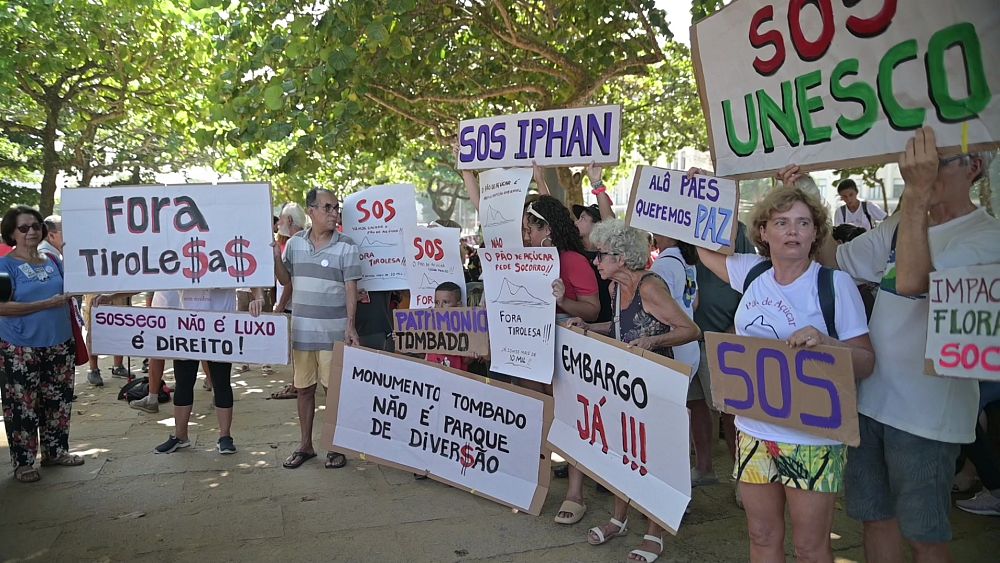Flying down a 755-metre zip wire above Rio de Janeiro’s iconic Sugarloaf Mountain could attract adrenaline-lovers from across the world.
But locals are not so keen.
Hundreds of protesters gathered beneath Rio's world-famous hotspot on Sunday to protest the ongoing construction of four ziplines aimed at boosting tourism.
What are the plans for Rio’s zipline project?
Rio plans to install four steel ziplines that will run 755 metres over the forest between Sugarloaf (Pao de Açucar) and Urca Hill. Riders will reach speeds of 100 km/h.
It is expected to be operational for the second half of this year but an online petition to halt work has been signed by almost 11,000 people.
Protesters say expanding the current facilities on the mountaintops will impact the area’s fauna and flora, not only because of the construction but also because of the increase in footfall.
"It is not right and it harms the city," says local Gricel Osorio Hor-Meyll. They believe the project will "disfigure" the UNESCO World Heritage Site, which stretches from the coastal mountain inland to other Rio icons such as Christ the Redeemer.
Protesters say the project is the ‘tip of the iceberg’
Gathered at the base of the iconic mountain on Sunday, protesters held up banners reading "SOS UNESCO" and "Out with zip lines”.
But the project is just "the tip of a gigantic iceberg," according to a statement from the group.
They are concerned by an even bigger project, under evaluation by the authorities, which includes the construction of attractions, shops, a performance hall and a nightclub at the top of the two peaks, which currently receive 1.6 million visitors a year.
“[The zipline] has nothing to do with the original idea of visiting the Sugarloaf,” says Aurimar dos Prazeres, President of the Urca Residents Association.
“It’s a natural beauty, it’s contemplative, it doesn’t need anything else that isn’t already up there, toilets, water fountains, bars, small shops. It doesn’t need more than that."
What is the best way to visit Sugarloaf Mountain?
There is already a cable car for visitors - which has been there for more than a century - between Pao de Açucar and Urca. Starting at a height of 396 metres and dropping to 220 metres, this delivers one of the best views in the city.
Parque Bondinho Pão de Açúcar, which operates the cable cars and is behind the 50-million reais (€8.9 million) project, said in a statement that sound tests indicate noise from riders will not be perceptible from below, nor will it affect climbing routes.
It added that the visual impact will be minimal because the zip line cables are less thick than those of the cable car and vibrate less.
The company says it has obtained all the necessary permits for the project and argues it will drive tourism.
Watch the video above to see more from the protests.


